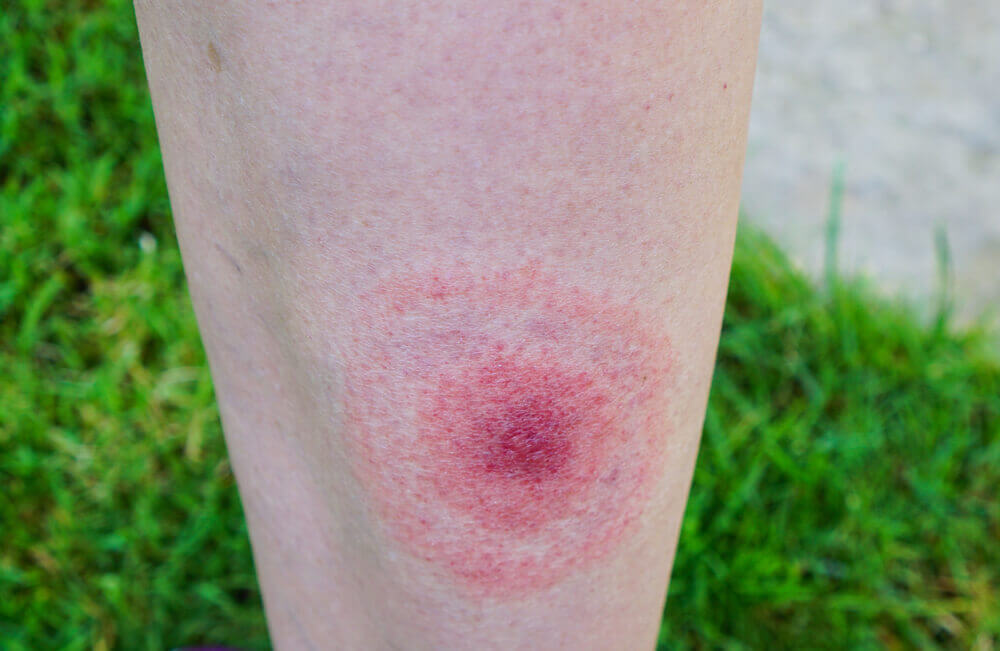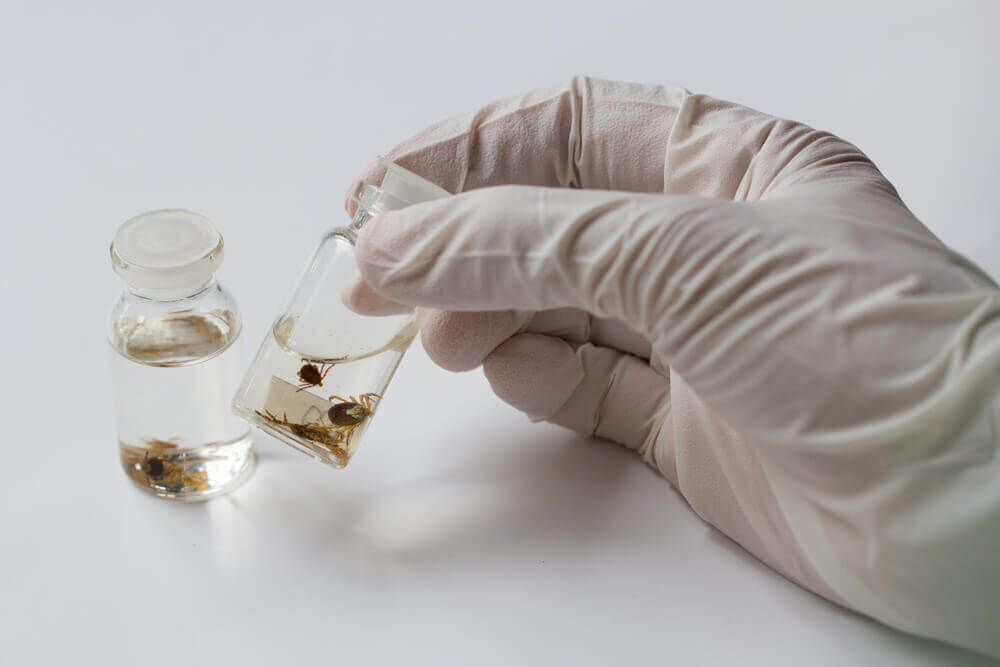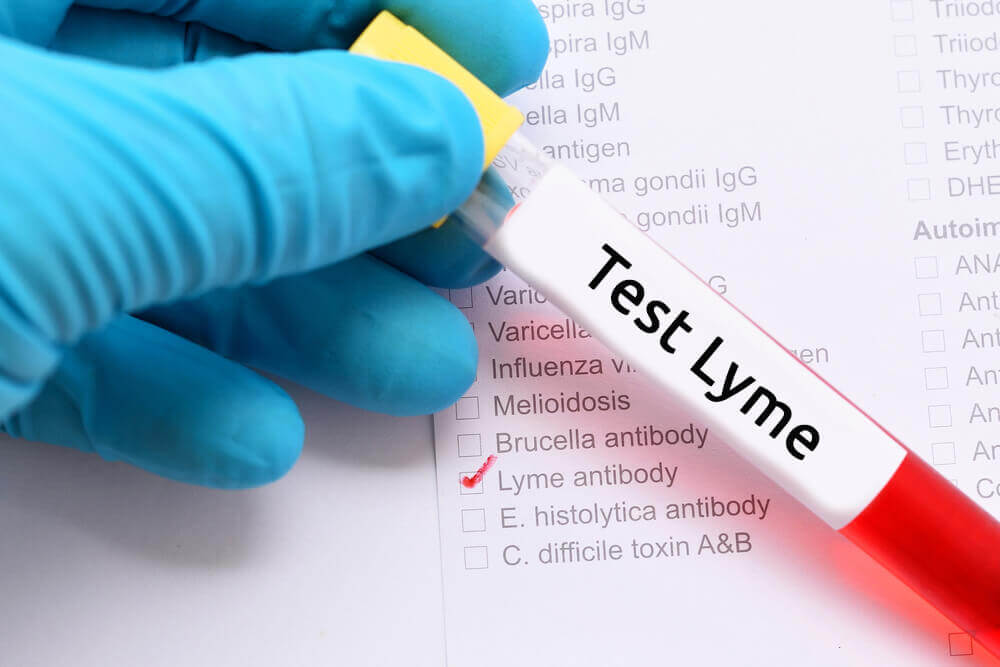Lyme Disease Symptoms You Need to Know


Reviewed and approved by the doctor José Gerardo Rosciano Paganelli
Lyme disease is a bacterial infection transmitted by black-legged ticks, which are also sometimes known as deer ticks. These insects are infected with the Borrelia burgdorferi bacterium, which they transmit to the human being through a bite. Then, Lyme disease symptoms appear soon after.
The Lyme disease bacterium is primarily carried by mice, squirrels and other small mammals. The tick picks up said bacteria from these little creatures, which it then transmits to the human being. For the disease to be transmitted, the tick must remain in the human’s body for between 24 and 36 hours.
If Lyme disease is not diagnosed early, it is liable to cause a host of different health problems. On the other hand, if it is detected and treated quickly, it is possible to cure it completely. In any case, statistics indicate that most people who are bitten by a tick do not end up getting Lyme disease.
Initial Stages

- Stage 1, or early or localized Lyme disease. In this phase, the bacteria has not yet spread throughout the body
- Stage 2, or early dissemination. This is when the bacteria begin to spread, between 36 and 48 hours after the bite
- Stage 3, or late dissemination. This is the phase in which the bacteria have already spread throughout the body
Initial Lyme Disease Symptoms
The first Lyme disease symptoms appear a few days after you contract the infection. However, in some patients, Lyme disease symptoms can take a few weeks to appear. The initial phase involves symptoms similar to that of flu:
- Headaches
- Joint pain
- Muscle pain
- Neck stiffness
- Fever with chills
- General malaise and fatigue
- Swollen lymph nodes
It is also common for a red rash to appear at the site of the bite – this rash may be flat or slightly raised. In the center of the lesion you’ll see a clearer area. This rash is called erythema migrans, and may later begin to appear in different areas of the body. If left untreated it can last for 4 weeks or more.
Symptoms During Early and Late Dissemination

The initial Lyme disease symptoms may appear and disappear just as quickly. But if Lyme disease is left untreated, it will begin to cause serious health problems. Once you reach stage 2, or early dissemination, it’s common to experience other Lyme disease symptoms, such as:
- Sensation of weakness
- Throat pain
- Difficulty breathing
- Paralysis in the muscles of the face
- Rigidity and pain in the back area
- Irregular heart palpitations
And when Lyme disease reaches stage 3, even more severe Lyme disease symptoms or complications may occur, such as the following:
- Arthritis. This manifests itself in pain in swollen joints, mainly in the knees
- Neurological problems. These can include meningitis, Bell’s palsy (or palsy of the facial muscles), and pain or numbness in the extremities. Cognitive difficulties and problems sleeping can also be part of this phase
- Heart problems. This is most commonly in the form of an irregular heartbeat, which usually disappears after a few days
In a few cases, other severe symptoms also appear. These can include: inflammation of the eyes, hepatitis and severe fatigue. Such conditions often arise months or even years the patient contracts the infection.
Diagnosis and Prognosis

A firm diagnosis is most often reached on the basis of a blood test called the ELISA test, which checks specifically for Lyme disease. However, the results of this test can sometimes be negative in the early stages of the disease, even where the infection is present. If the patient is taking antibiotics during the early stage of the disease, this will also mean that it doesn’t show up in an ELISA test.
In many cases, the doctor will simply make a diagnosis based on the symptoms. These, together with a patient’s history of being in areas where he or she was exposed to ticks, allow medical professionals to make a diagnosis of Lyme disease without resorting to a blood tests. In the late phases, other tests will be ordered, such as an electrocardiogram, magnetic resonance, echocardiography or a spinal tap.
If a patient is able to begin a course of treatment in the early stages of the disease, the prognosis is usually excellent. When the disease is more advanced, the patient may continue to experience symptoms, which can sometimes be very severe. And in a minority of cases some symptoms, such as arthritis or changes in the rhythm of the heart, become chronic.
All cited sources were thoroughly reviewed by our team to ensure their quality, reliability, currency, and validity. The bibliography of this article was considered reliable and of academic or scientific accuracy.
- Pérez Guirado, A., et al. “Enfermedad de Lyme: a propósito de dos casos.” Pediatría Atención Primaria 15.59 (2013): e105-e109.
- Portillo, Aránzazu, Sonia Santibáñez, and José A. Oteo. “Enfermedad de Lyme.” Enfermedades Infecciosas y Microbiología Clínica 32 (2014): 37-42.
- Taylor, Cassandra M. Skinner, et al. “Enfermedad de Lyme.” Medicina universitaria 9.34 (2007): 24-32.
This text is provided for informational purposes only and does not replace consultation with a professional. If in doubt, consult your specialist.








